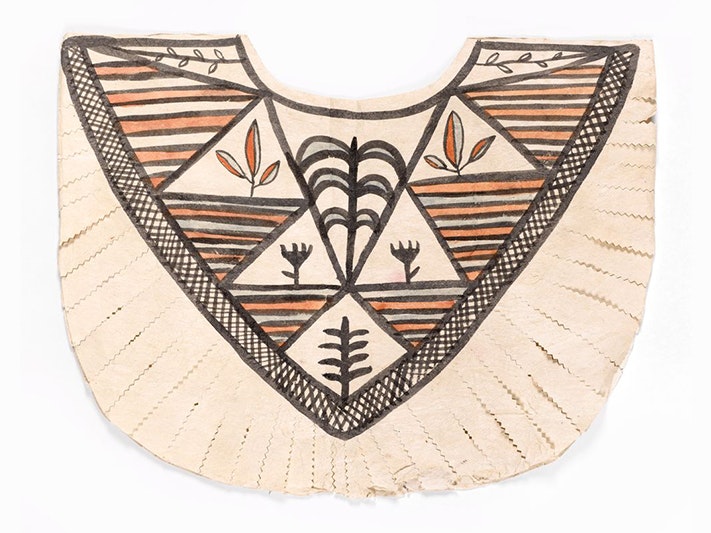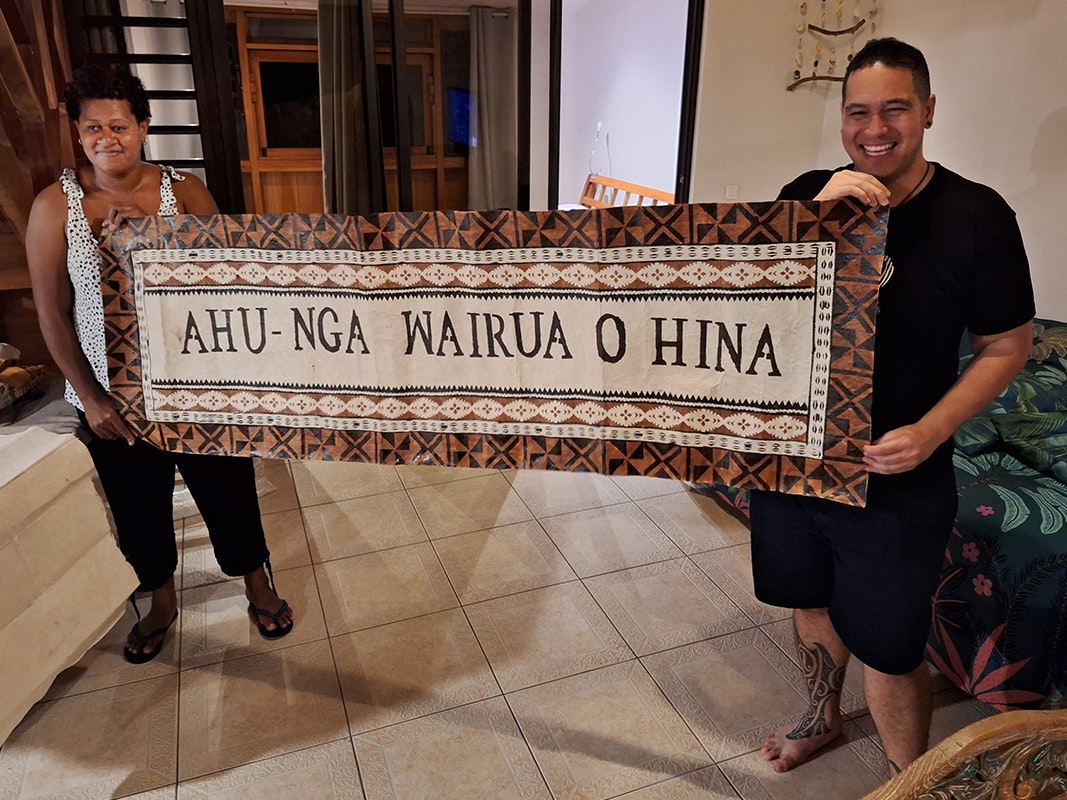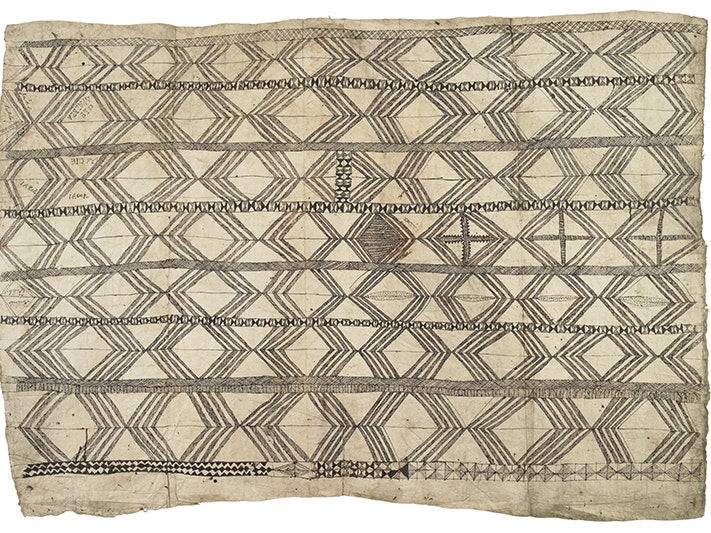
Watch: Cora-Allan Lafaiki Twiss at the ‘Ahu: Ngā Wairua o Hina wānanga
Watch Niuean hiapo artist Cora-Allan Lafaiki Twiss talk about her work as a hiapo maker and artist.
“...hiapo is not the kind of artform or the kind of practice that you just pick up. You can't pick up a practice if there are no tools left. You can't pick up a practice if there are no knowledge holders, and so I had to go and find those things.”
Cora-Allan (Niue – Alofi, Liku. Aotearoa – Ngāpuhi, Ngāti Tumutumu) started her journey with hiapo because of a personal request from her grandparents asking her to create their burial cloths. She then found that there were no known makers of hiapo who she could learn from.
To honour her grandparents and their wish, Cora-Allan embarked upon a long process of learning and discovery, researching cloth held in museums and private collections, and eventually being able to restore the art of hiapo through her own practice.
Now, Cora-Allan is driven by her desire to see hiapo normalised and reintegrated into the lives and homes of the Niuean community and has helped them to connect with this once-dormant practice. She uses the bark of ata (paper mulberry), and incorporates kāpia ink sourced locally in Aotearoa.
Watch Cora-Allan talking about her Niuean hiapo practice and what it means to her at the 2023 ‘Ahu: Ngā Wairua o Hina talanoa in Tahiti.
‘Ahu: Ngā Wairua o Hina
In 2021, Te Papa acquired a rare book containing tapacloth samples, cut from larger pieces collected during Captain Cook’s Pacific voyages in 1768, 1772, and 1776, and compiled by Alexander Shaw in 1787. The samples represent tapa-making practices from various islands including Hawai‘i, Tahiti and Tonga.
In 2023, in Tahiti, ‘Ahu: Ngā Wairua o Hina gathered tapa makers of Tongan, Sāmoan, Niuean, Fijian, Hawaiian, Tahitian, Pitcairn-Norfolk Island, and Māori descent for five days to learn about and re-establish their living relationships to the cloth held within Alexander Shaw’s book.
Through a process of wānanga this group of makers created two tapa bundles, incorporating the ideas of past, present, and future – one of the bundles is with Te Papa and the other with Te Fare Iamanaha-Musée de Tahiti et des Îles.
You might also like


‘Ahu: Ngā wairua o Hina – Tapa workshops in Tahiti
After acquiring a book of tapa samplers collected by Alexander Shaw that represents tapa-making practices from various islands in the Pacific, tapa makers, Te Papa curators, and our Senior Librarian, gathered together in Tahiti for a wānanga (workshop) to explore and respond to the samplers in the book.

Hiapo: Niuean tapa cloth
Hiapo is made from the bark of the paper mulberry tree. Little is known of pre-nineteenth-century forms of Niuean cloth, but we do know that in the 1830s, Sāmoan methods of making siapo or tapa barkcloth were introduced to Niue by Sāmoan missionaries.